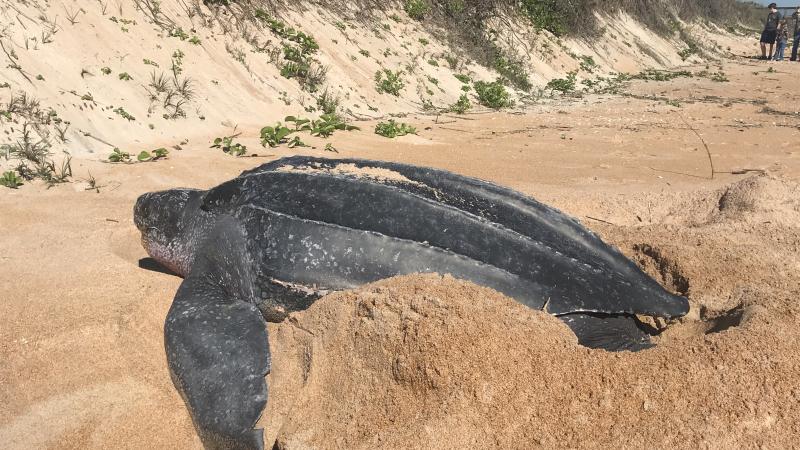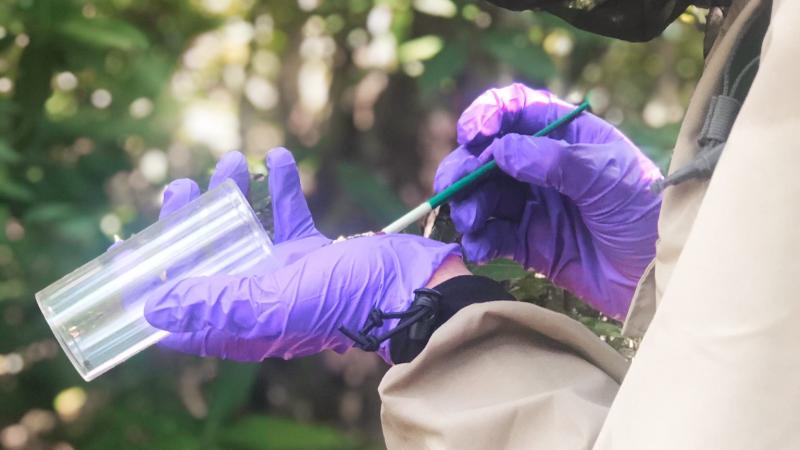Sea Turtle Nesting Season Begins

Many of the 100 miles of beaches protected by Florida State Parks provide nesting habitat for sea turtles. That means the Florida Park Service takes an active role in protecting sea turtle nests and nesting habitat.
As nesting season gets into full swing, park staff and biologists are prepared to monitor nests and keep them safe. At major turtle nesting sites like John D. MacArthur Beach State Park and Cayo Costa State Park, park staff and volunteers locate turtle crawls on park property. These crawls, or signs of turtle movement in the sand, help us gauge nesting activity in certain areas. We record the crawl locations and, when possible, identify the species and check whether the crawl resulted in a nest.
Staff and volunteers also perform the important task of patrolling nest sites to make sure they are not being disturbed. Often, nests in high-traffic areas are marked so that they’re easier to see and avoid. Patrols also help staff protect nests from predators, report stranded or injured turtles and teach others about Florida’s sea turtles.
Why do Florida State Parks staff and volunteers work so hard to protect sea turtles? Simply because many factors work against endangered turtles, including loss of nesting habitat. Hatchlings, which use moonlight to navigate from the nest to the shore, can be misled by artificial lights. Juvenile sea turtles are small and vulnerable to predators on land and at sea.
Florida Park Service biologist, Scott Tedford, researches and protects nesting sea turtles at state parks in South Florida and the Florida Keys. Tedford says there are simple things that everyone can do to share Florida's beaches with sea turtles and hatchlings:
- Give nesting adults and their hatchlings space and take care not to disturb them.
- Turn off artificial lighting near beaches at night during nesting season and use turtle-friendly lights approved by FWC.
- Properly dispose of food items to decrease predation from wildlife.
- Properly dispose of debris like fishing line, netting and plastics.
- Keep obstacles such as beach furniture off the beach during nesting season.
- Participate in beach cleanup events.
- Avoid buying items derived from sea turtles.
- Buy a turtle license plate to raise money for the protection of sea turtles.
- Learn more about sea turtles and share what you learn with others!


